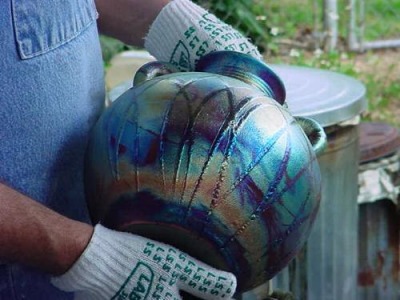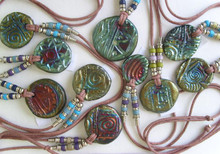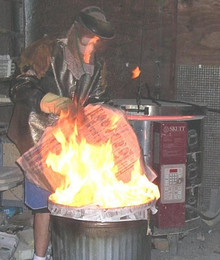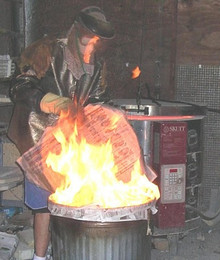 Loading... Please wait...
Loading... Please wait...- 8132402066
- Home
- My Account
- Gift Certificates
- View Cart
Categories
- Home
- Common Myths About Raku
Common Myths About Raku

First of all, when people say raku has been around for hundreds of years that is a half truth. The Raku that was done hundreds of years ago is not anything like the modern raku we do in the US. Post reduction raku has only been around for a little more than 50 years and Copper Matte raku has been around for even less time.
Post-Reduction Raku is the process of putting the hot piece into a metal container with a combustible material, letting a fire start, then covering it to choke the fire out, and letting the piece cool. Copper Matte raku is one of the hardest, yet one of the most beautiful raku techniques when done right. The problem is most people don't do it right.
One of the biggest myths of the raku process is, you need to pull the piece out of the reduction after only a 15 to 20 minute time period and dunk it in water to stop the colors. I think this is very dangerous because the reduction chamber could flame up in your face when you allow oxygen to hit the combustible material in the can while it is still very hot. It is true it will stop the colors changing but more times than not you will crack the piece too. Because pieces were cracking, it was decided that raku had to be done with a special clay body that could withstand the shock of the rapid cooling. A lot of good raku has been lost from the myth that you had to put the piece in water. Another reduction myth is you need a bed or nest of shredded paper, saw dust, hay, or straw to lay the hot piece in to reduce. All that will do is cause scaring on your raku piece.
A Myth that I hear over and over is, if you are doing raku in an electric kiln you need to unplug it to pull the pieces. I have been firing raku for over twenty years in electric kilns and I have never turned off the kiln to pull my work and I have never been electrocuted either, but I'll leave this one up to you. If you feel safer by turning the kiln off go ahead and do it, but you will need to turn it back on and wait for it to gain heat to pull again. Most kilns in America are well grounded, I wear rubber souled shoes, and I stand on thick rubber mats to pull. As a disclaimer I'll say leave the kiln on at your own risk.
The best thing about using an electric kiln is you can keep it going while you pull the raku out. I use two kilns and go from one to the other so each kiln has time to recover and get back to pulling temperature. An electric kiln is also an oxidation firing, meaning the kiln won't reduce before you pull and put the piece in the reduction chamber. A common mistake made by people firing in a gas kiln is to fire too fast and start reduction while firing.
Since the post reduction method of raku has been around people have been doing all kinds of things to the process, some worked sometimes and some didn't work at all, but none worked every time. My firing method is the easiest, plus it works every time. You can use any clay body. The piece stays in the reduction can until it is cooled and it is never put in or touched with water, therefore you don't have a problem with a can flaming up in your face as you pull the piece from the reduction chamber and the piece won't crack from being put into water while it is still hot.
With my method of reduction you hardly ever have scars on the piece because I use newspaper to line the sides and bottom of the cans and the piece is stood up in the can, letting the flames work all around the piece without the piece laying on its' side.
There have been several Copper Matte glaze formulas over the years. One of the most common ones used is a frit and 80% to 90% copper carbonate . This formula is very unstable and copper matte raku done with these glazes will change rather quickly to dull colors. The copper matte formula I have developed over the many years I've been doing raku has only about 15% copper carbonate in the mixture, so it is more stable. I also do something I don't think anyone else does. After I pull the pieces from the reduction cans, I brush them off, and put them into a kiln over night. The kiln is vented and maintains a 350F temperature; this sets and brightens the colors while taking away most of the smoky smell of the raku pieces.







